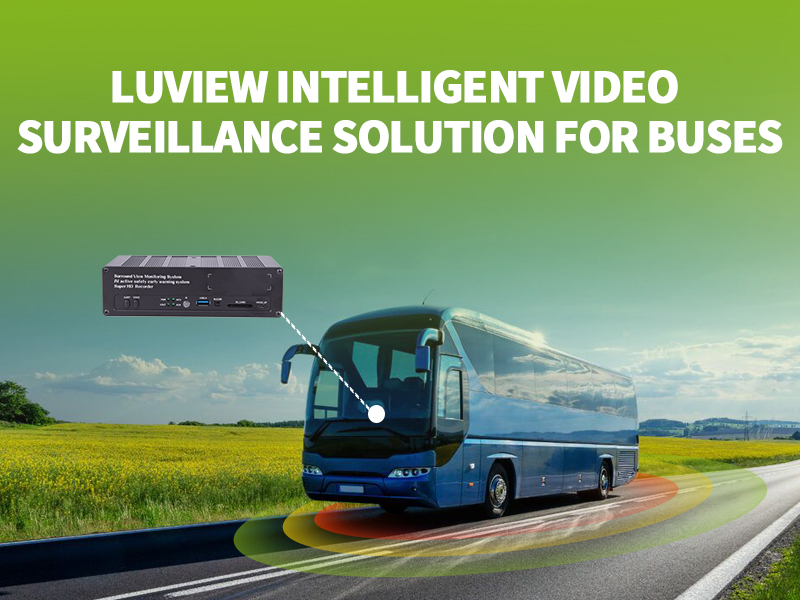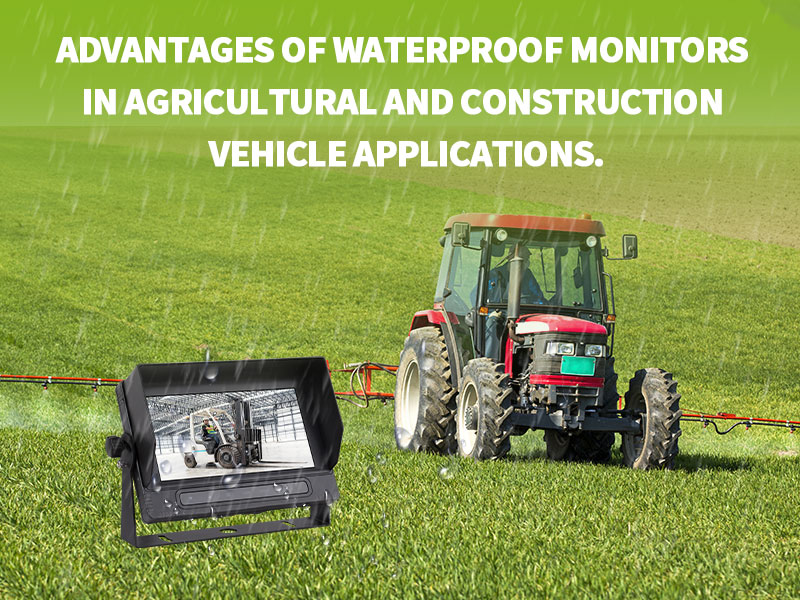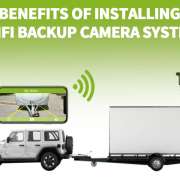LUVIEW JY-PT10+MW77F 77G Millimeter-wave Parking Sensor Blind Spots Radar System
I. What is an automotive radar?
In simple terms, a radar is essentially a sensor that detects the surrounding environment by emitting electromagnetic waves. Its core functions mainly include: 1. Range Measurement; 2. Speed Measurement; 3. Positioning (such as blind-spot monitoring). Millimeter-wave parking sensor is a type of radar system that uses millimeter-wave frequencies (typically ranging from 30GHz to 300GHz) to detect and measure targets. Millimeter-wave parking sensor has a wide range of applications in automotive driving assistance systems, drones, smart homes, and security surveillance.
II.Why do we need parking sensor?
| Scenario | Function of Radar | Risks Without Radar |
| Automated Parking | Detecting the edges of parking spaces and obstacles  | Risk of scraping the vehicle body or misjudging space
|
| Emergency Braking | Real-time monitoring of sudden dangers (e.g., pedestrians)  | Inability to brake in time, leading to accidents |
| Driving in Fog | Penetrating through rain and snow to detect road contours  | Reliance on cameras can lead to visual blind spots |
III. Introduction to millimeter-wave parking sensor system
The Luview JY-PT10+MW77F 77G millimeter-wave parking sensor system is an intelligent driving assistance device designed specifically for modern automobiles, officially launched in 2023. It employs advanced 77GHz millimeter-wave parking sensor technology, capable of real-time monitoring of the vehicle’s surroundings and providing precise early warning information to drivers. Whether on busy urban roads or at high speeds on highways, this parking sensor system can operate stably in all weather conditions and at all times, ensuring driving safety.

IV. Product features
1.All-Weather monitoring capability
The JY-PT10+MW77F 77G millimeter-wave parking sensor system features strong penetration capabilities, allowing it to penetrate complex environments such as smoke, fog, and dust for uninterrupted 24/7 monitoring. Its unique sensor design ensures precise detection of target objects even under severe weather conditions, providing reliable early warning support for drivers.
2.High-Precision detection and multi-target monitoring
The system employs Frequency Modulated Continuous Wave (FMCW) modulation, enabling precise measurement of the distance, speed, and angle of moving targets. With a distance measurement accuracy of up to 0.18 meters, a range resolution of 0.2 meters, and a detection range of up to 40 meters, it can accurately identify and provide real-time feedback on both fast-moving vehicles and slow-moving pedestrians.
3.Multi-Functional early warning system
The JY-PT10+MW77F 77G millimeter-wave parking sensor system integrates multiple early warning functions, including Blind Spot Detection (BSD), Lane Change Assist (LCA), and Rear Cross Traffic Alert (RCT). When a target object enters the warning zone, the system issues a Level 1 or Level 2 alert based on the vehicle’s driving status and the use of turn signals, alerting the driver to potential hazards.
4.Flexible configuration and installation
The system supports various configuration options, allowing customers to choose between 2, 3, or 4 sensor setups based on vehicle size and specific needs. The parking sensors operate within a voltage range of 8-36V, while the main control unit operates on 12-36V, compatible with different vehicle electrical systems. Additionally, the radar sensors can be installed at heights ranging from 0.3 to 1 meter, with the detection face perpendicular to the ground, ensuring optimal monitoring performance.



5.Robust and durable design
The JY-PT10+MW77F 77G millimeter-wave parking sensor system features an IP67 dust and water resistance rating, ensuring stable operation in extreme environments. It has a working temperature range of -40°C to 85°C and a storage temperature range of -40°C to 85°C, making it adaptable to a wide range of climatic conditions.
V. Detailed functionality
1.Blind Spot Detection (BSD)
The system’s Blind Spot Detection function effectively monitors the blind spots on both sides of the vehicle. When an object enters the blind spot at a relative speed greater than 5 km/h, the system will issue an alert. If the vehicle’s turn signal is not activated, a Level 1 alert will be triggered; if the turn signal is activated, a Level 2 alert will be issued to warn the driver of the risk of changing lanes.
2.Lane Change Assist (LCA)
The Lane Change Assist function monitors vehicles approaching from both sides. When an object enters the warning zone, the system will issue a Level 1 alert to remind the driver to be aware of the movements of surrounding vehicles and to avoid potential collision risks.
3.Rear Cross Traffic Alert (RCT)
The Rear Cross Traffic Alert function monitors obstacles or moving objects behind the vehicle. When an object enters the rear warning zone, the system will issue an alert to help the driver avoid collisions while reversing.

The JY-PT10+MW77F 77G millimeter-wave parking sensor system not only enhances driving safety but also brings an unprecedented level of convenience to the driving experience. Choosing the JY-PT10+MW77F 77G millimeter-wave parking sensor system means choosing peace of mind and security. For more product information, please contact sales@luview.com.



 As urban public transportation systems continue to evolve, bus transport has become not only a convenient mode of travel but also a sector fraught with management and safety monitoring challenges. Confronted with the growing complexity of traffic conditions and the evolving needs of passengers, bus companies and related authorities are in dire need of more effective management strategies to ensure operational safety and service quality. The primary challenges encompass safety assurance and accident prevention (for instance, the frequent occurrence of traffic accidents due to drivers’ rule-breaking behaviors, which jeopardize the safety of passengers) as well as the quality and operational efficiency of bus services (such as the inflexibility in vehicle scheduling and the inadequate capacity to handle unexpected incidents).
As urban public transportation systems continue to evolve, bus transport has become not only a convenient mode of travel but also a sector fraught with management and safety monitoring challenges. Confronted with the growing complexity of traffic conditions and the evolving needs of passengers, bus companies and related authorities are in dire need of more effective management strategies to ensure operational safety and service quality. The primary challenges encompass safety assurance and accident prevention (for instance, the frequent occurrence of traffic accidents due to drivers’ rule-breaking behaviors, which jeopardize the safety of passengers) as well as the quality and operational efficiency of bus services (such as the inflexibility in vehicle scheduling and the inadequate capacity to handle unexpected incidents).


 In recent years, the popularity of universal dash cams has seen a rapid increase, with drivers worldwide increasingly recognizing their value in terms of road safety, security, and peace of mind. The sharp rise in demand for universal dash cams can be attributed to several key factors, each addressing significant challenges faced by drivers today.
In recent years, the popularity of universal dash cams has seen a rapid increase, with drivers worldwide increasingly recognizing their value in terms of road safety, security, and peace of mind. The sharp rise in demand for universal dash cams can be attributed to several key factors, each addressing significant challenges faced by drivers today.
 With the increasing popularity of transportation and the rise in traffic volume, the number of heavy commercial vehicles on urban roads is also constantly increasing. However, due to the large size and inertia of heavy vehicles, they face relatively greater safety risks during operation. The introduction of heavy duty vehicle millimeter wave radar systems has provided an effective solution to enhance traffic safety levels and reduce the frequency of traffic accidents. Here are several benefits:
With the increasing popularity of transportation and the rise in traffic volume, the number of heavy commercial vehicles on urban roads is also constantly increasing. However, due to the large size and inertia of heavy vehicles, they face relatively greater safety risks during operation. The introduction of heavy duty vehicle millimeter wave radar systems has provided an effective solution to enhance traffic safety levels and reduce the frequency of traffic accidents. Here are several benefits:
 In modern transportation, driving safety is of paramount importance. Artificial intelligence camera systems, as advanced driving assistance technology, provide drivers with excellent obstacle detection, pedestrian detection, and audible warnings, significantly enhancing driving safety and convenience.
In modern transportation, driving safety is of paramount importance. Artificial intelligence camera systems, as advanced driving assistance technology, provide drivers with excellent obstacle detection, pedestrian detection, and audible warnings, significantly enhancing driving safety and convenience.
 Large vehicle explosion-proof camera system is an innovative technology designed specifically for large vehicles. It features explosion-proof and waterproof capabilities, providing both safety protection and visual assistance for vehicles. These systems are suitable for vehicles operating in hazardous environments, such as oil tankers, natural gas trucks, fire trucks, military vehicles, and ships.
Large vehicle explosion-proof camera system is an innovative technology designed specifically for large vehicles. It features explosion-proof and waterproof capabilities, providing both safety protection and visual assistance for vehicles. These systems are suitable for vehicles operating in hazardous environments, such as oil tankers, natural gas trucks, fire trucks, military vehicles, and ships.
 Waterproof monitors play a crucial role in agricultural and construction vehicle applications. They not only possess the functionalities of regular monitors but also offer waterproof capabilities, providing numerous advantages for the agriculture and construction industries. This article will delve into the benefits of waterproof monitors in agricultural and construction vehicle applications to help readers gain a better understanding of their significance.
Waterproof monitors play a crucial role in agricultural and construction vehicle applications. They not only possess the functionalities of regular monitors but also offer waterproof capabilities, providing numerous advantages for the agriculture and construction industries. This article will delve into the benefits of waterproof monitors in agricultural and construction vehicle applications to help readers gain a better understanding of their significance.
 In today’s road traffic, the road safety of large vehicles has always been a matter of concern. Due to their enormous size and limited visibility, these vehicles often have blind spots, leading to increased potential dangers and accident risks. To address this issue, the 360-degree bird’s-eye view system has emerged as an innovative solution to enhance the road safety of large vehicles. This article will explore how the application of the 360-degree bird’s-eye view system provides a comprehensive view, eliminates blind spots, and improves the safety of driving for large vehicles.
In today’s road traffic, the road safety of large vehicles has always been a matter of concern. Due to their enormous size and limited visibility, these vehicles often have blind spots, leading to increased potential dangers and accident risks. To address this issue, the 360-degree bird’s-eye view system has emerged as an innovative solution to enhance the road safety of large vehicles. This article will explore how the application of the 360-degree bird’s-eye view system provides a comprehensive view, eliminates blind spots, and improves the safety of driving for large vehicles.
 In today’s automotive technology landscape, WiFi backup camera systems have become increasingly popular. This technology not only enhances the safety of drivers but also offers added convenience. This article will explore the benefits of installing WiFi backup camera systems and why they have become crucial in modern vehicles.
In today’s automotive technology landscape, WiFi backup camera systems have become increasingly popular. This technology not only enhances the safety of drivers but also offers added convenience. This article will explore the benefits of installing WiFi backup camera systems and why they have become crucial in modern vehicles.